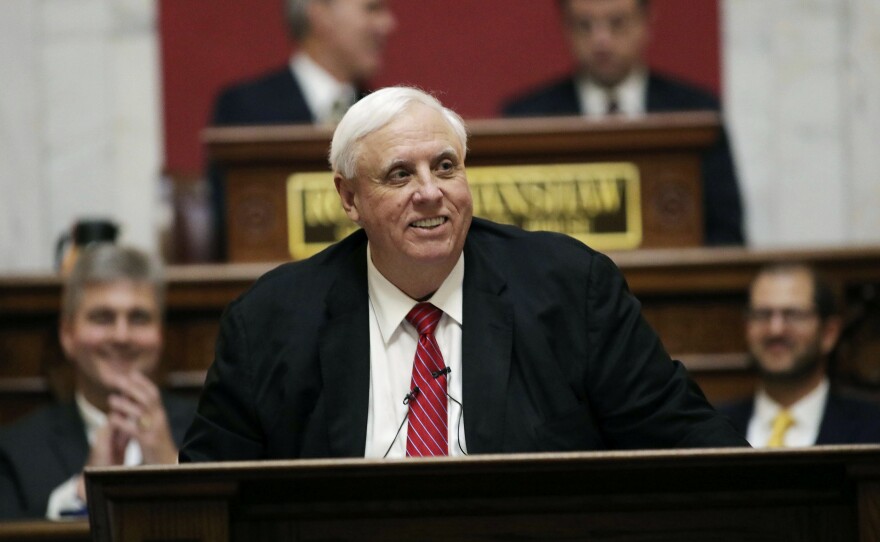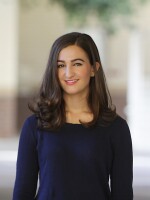West Virginia isn't known for its good health outcomes. It leads the nation in deaths from diabetes, accidents and drug overdoses. But when it comes to distributing the COVID-19 vaccine, the state has been a shining star.
It didn't start out that way. In late December, on what was the day that Gov. Jim Justice announced West Virginians older than 80 would be able to receive doses of the vaccine from their county health departments, seniors began lining up right away — even before doses of the vaccine were available. Chris Dorst, a Charleston Gazette-Mail photographer for 30 years, was sent out by his editor to photograph the serpentine line of senior citizens she'd seen waiting outside the Kanawha-Charleston Health Department, under the gray December sky.
COVID-19 vaccines are now available to any West Virginian 80 years old or over, Gov. Jim Justice announced at his Wednesday news briefing.https://t.co/U6zl7ndvKz
— Charleston Gazette-Mail (@wvgazettemail) December 30, 2020
"Some people had wheelchairs or walkers — elderly people, and maybe some family members with them in line, just waiting. It seemed to move really slow," Dorst says.
Behind the scenes at Kanawha-Charleston Health Department, things were chaotic. The staff received a call from the governor's office at 11 a.m. letting them know they would receive vaccines to distribute to seniors, just one hour before Justice's public announcement. As soon as the governor made the announcement, octogenarians came down to stand outside the health department. By the time Dr. Sherri Young, the county health director, returned to the building with the doses of the Moderna vaccine, it was nearly 2 p.m. But the vaccine she'd just picked up still needed to thaw, the line of elderly constituents was only getting longer and rain was in the forecast. Young's office was able to repurpose thawed doses of the vaccine meant for first responders and deliver 210 shots to the people in line that day.
In other parts of the country, some beleaguered county health departments have reported that beyond making vaccine doses available to them, state governments did nothing to help them get shots into arms.
But West Virginia has been successful in part because the opposite is true.
Maj. Gen. James Hoyer is the head of the state's COVID-19 Joint Interagency Task Force for Vaccines. Hoyer, who retired as head of the West Virginia National Guard before assuming his role at the head of the vaccine task force, saw Dorst's striking photograph in the Charleston Gazette-Mail in his morning paper the following day.
"I remember seeing the picture," Hoyer says.
People didn't have any information yet about where and when to go, so they just showed up. Hoyer says it was a communications problem he needed to solve as quickly as possible. He got on the phone with Young to discuss "how we're going to help her get folks in."
Many states have relied on electronic registration systems — including the online ticket sales website Eventbrite after their own websites crashed — to help the public schedule vaccine appointments. But Hoyer says in West Virginia, that's not a great option. As much as 30% of the state's population lacks access to broadband Internet. Plus, as Hoyer puts it, "If you're talking about people over the age of 70 and in their 80s, how many of them are Internet savvy?"
Hoyer's team decided on a simple solution: a telephone hotline. Call it and residents can ask questions about how and where to get the vaccine, as well as schedule appointments.
Elsewhere, state COVID-19 hotlines have crashed, impacting cell service generally as networks strain under too many calls. West Virginia's population of 1.8 million reduced the chances of that happening. The state decided not to outsource the hotline to a private company as some states have done, housing it instead under the Department of Health and Human Resources' Office of Constituent Services. Justice gets a report every night on call volume, wait times and appointments scheduled.
"The last time I looked, it was 6 minutes," Hoyer says disapprovingly, of the hotline's average wait time. "What that tells us is we probably need more people manning the hotline."
West Virginia has administered almost 450,000 doses of COVID-19 vaccine. More than 9% of its population has gotten both doses. Alaska and West Virginia trade off for first place among states for the percentage of the population that have received both doses of the COVID-19 vaccine. If broadened out to look at the whole world, the percentage of the population of West Virginia already fully vaccinated would rank third.
"Not bad for a bunch of hillbillies," Hoyer says.
Copyright 2022 NPR. To see more, visit https://www.npr.org. 9(MDAzMjM2NDYzMDEyMzc1Njk5NjAxNzY3OQ001))








